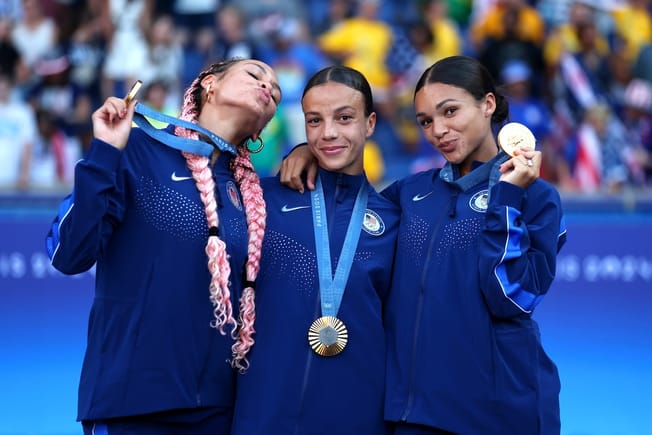Up against Japan in the quarterfinals, the U.S. women’s national team came up against their toughest test of the 2024 Olympics on Saturday.
There weren’t going to be any major surprises in a game between two teams that know each other quite well – it was always going to simply be a competitive, highly tactical match. The irony, of course, was that in the end, for all the tactics, the 1-0 match was won with a moment of individual brilliance from Trinity Rodman. Her scintillating cut in and finish guaranteed the U.S. a semifinal place and a chance to compete for a medal of some kind.
Up until that goal, there was no shortage of tactical intrigue. Let’s unpack it all ahead of the USWNT’s semifinal match on Tuesday.
The midfield tweak
Sam Coffey’s yellow card in the United States’ final group stage game against Australia ensured she would miss this quarter final clash through suspension. With Tierna Davidson still recovering from an injury, renowned utility player Emily Sonnett – the natural alternative in defensive midfield – was required in central defense.
A lack of available bodies in central midfield left a hole only Korbin Albert could fill.
There were question marks over how the 20-year-old would handle the responsibility, especially against a Japanese side that incorporates lots of off-ball movement. Though she’s far from an ambitious passer, Albert largely held up. More noticeable than the specific personnel was the shape of the midfield, as manager Emma Hayes decided this was the game to shake things up a bit.
Up until now, the USWNT has largely set up in a 3-2-5 shape in possession. But against Japan?
The U.S. used more of a 3-3-4, with just one midfielder – Albert – operating in front of the backline. Lindsey Horan was given even more license to push forward than usual, making it a more conventional “open triangle” in midfield with Albert holding while Horan and Rose Lavelle attacked. Hayes went for this shape during the United States’ pre-Olympic friendlies, but Saturday was the first time the 3-3-4 appeared in France.

It may not have had an obvious impact on the outcome of the game, but this change allowed the U.S. to outnumber Japan on the wings. With Japan defending in a 5-4-1, Lavelle and Horan would pull wide and create a three-v-two.






